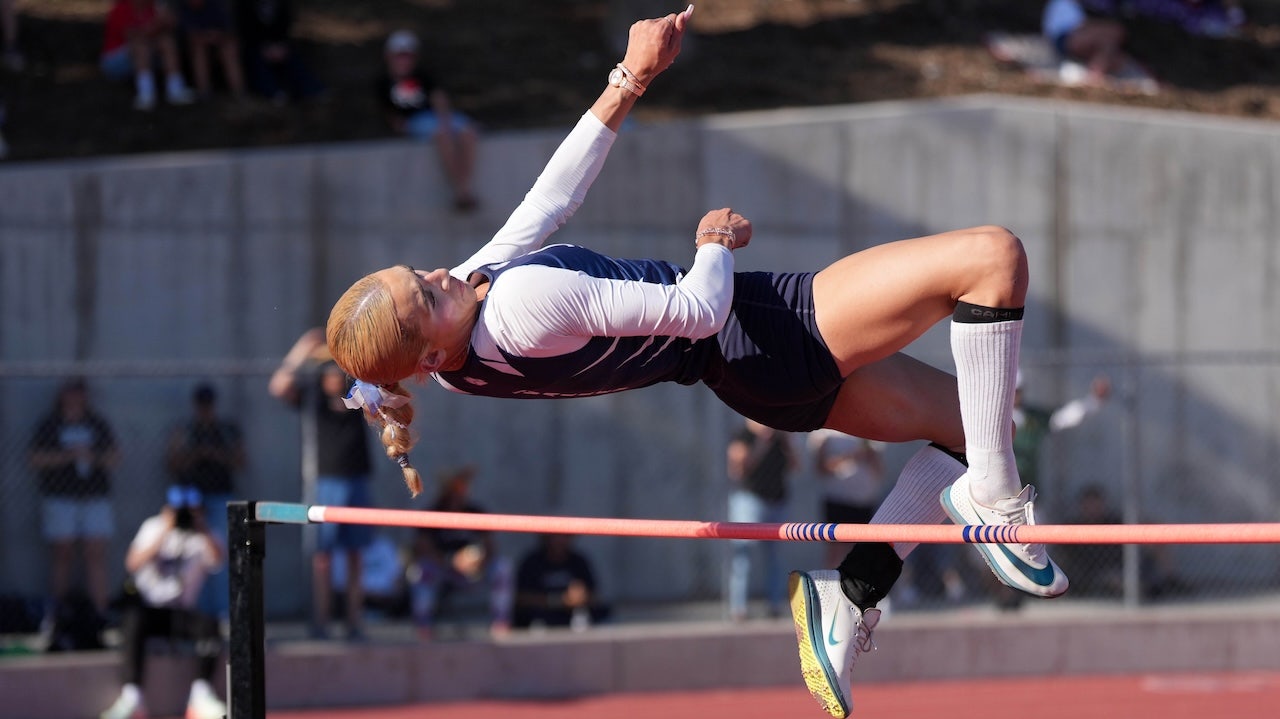Gigi Robinson has posed for Sports Illustrated Swim and built a public career around confidence and visibility.
So it might surprise some that she recently made a deeply personal and physically transformative decision — to get a breast reduction.
And she revealed to The Post that it’s had a major impact on her overall health.
“It was never a cosmetic thing for me. My goal was not to get a breast reduction to be smaller or to lose weight,” she told The Post.
“My goal was rooted in my desire to overcome chronic illness.”
Robinson — who describes herself as traditionally a size 4 or 6 — had to size up to 10 or 12 just to fit her bras pre-surgery.
She estimates she was close to an E-cup on her 5-foot-4-inch frame — and the physical toll was undeniable.
“I could not exercise without a lot of pressure in my neck and my shoulders and my back,” she said.
“And getting imaging and trying things like acupuncture and cupping, cold plunge, sauna — all those things have helped me with my pain and fatigue, but it was so specific to my upper abdominals and upper body.”
The decision came after years of dealing with debilitating chronic pain.
“I was diagnosed with hypermobile Ehlers-Danlos syndrome at around 10 or 11 and that was really challenging,” she said.
Ehlers-Danlos syndrome is a group of inherited connective tissue disorders marked by unusually flexible joints, stretchy skin and a tendency to bruise easily or suffer from frequent joint dislocations and chronic pain.
“The only regret I have — like many other women — is I wish I did this sooner.”
Gigi Robinson
“I grew up with chronic migraines, chronic fatigue, pain, brain fog — a lot of different symptoms — and by the time I got to college, I really realized how much of an impact living with a chronic illness had on me,” she said.
Even after getting surgery in 2022 and switching to an organic diet, she was still experiencing severe neck and shoulder pain.
“That’s when I really made the decision to go forward and consider a breast reduction,” she said.
“I had three or four different consults and all the doctors said, ‘We think you could benefit from this.’
“And I think the only regret I have — like many other women — is I wish I did this sooner.”
Contrary to what some people might think, Robinson was told a doctor couldn’t really guarantee how many cup sizes she would go down after the surgery.
“They have a certain amount of tissue that they have to keep alive and keep in order to make your body still function the right way,” she explained.
But what she can confirm is that “things fit way different than they used to — in a good way.”
While Robinson was not met with any negativity about her breast reduction, she’s aware that it is considered a hot topic, which is odd because — even if someone did get a breast reduction for aesthetic reasons — she believes “it’s the same argument that people make to get breast implants — it’s just the reverse.”
And she has a message for anyone who thinks someone who wants to get a breast reduction should “just” lose weight.
“My doctor said, ‘It’s like we’re doing origami, but with your boobs.’”
Gigi Robinson
“You have to think about the limitations that people living with a larger chest and/or a chronic illness may be suffering,” she said.
“Losing weight is not necessarily a great option. It also perpetuates the idea that you’re getting a breast reduction because you wanna be smaller.”
Another breast reduction myth she wants to debunk is the idea that it involves a long, intensive surgery — it’s actually a two-to-four-hour outpatient surgery.
“The doctor comes in marks you up with a sharpie and shows you kind of where he’s going to cut — my doctor said, ‘It’s like we’re doing origami, but with your boobs’ — and then you go into the room, and then you wake up in the outpatient room and obviously you are coming out of anesthesia so you’re a little loopy.”
She noted that the only painful part were the drains — small tubes placed near the incision site to prevent fluid from building up — which she had to wear for about a week and keep dry the whole time.
How did she shower? “Well, you get creative,” she said with a laugh.
They were also uncomfortable, as it felt like “applying pressure on a wound” whenever her arms were down.
While she admitted that “the first week was hard” because she was a little sore and needed help going to the bathroom, she felt fine after the first five days.
The only complication she really experienced was slow wound healing, which is a symptom of EDS.
These days, she’s doing great.
“I’m so happy,” she said. “I’ve been doing almost daily workouts at the gym again. I’m feeling really good.”
She’s not slowing down either — her children’s book, “A Kids Book About Chronic Illness,” has recently hit shelves, and she’s currently working on a nonfiction book for adults, among other big projects.
And she has a message to share with other people who might be grappling with the decision to get breast reduction surgery or living with a chronic pain condition:
“If you advocate for yourself and if you educate yourself, a whole new world can unlock.”














